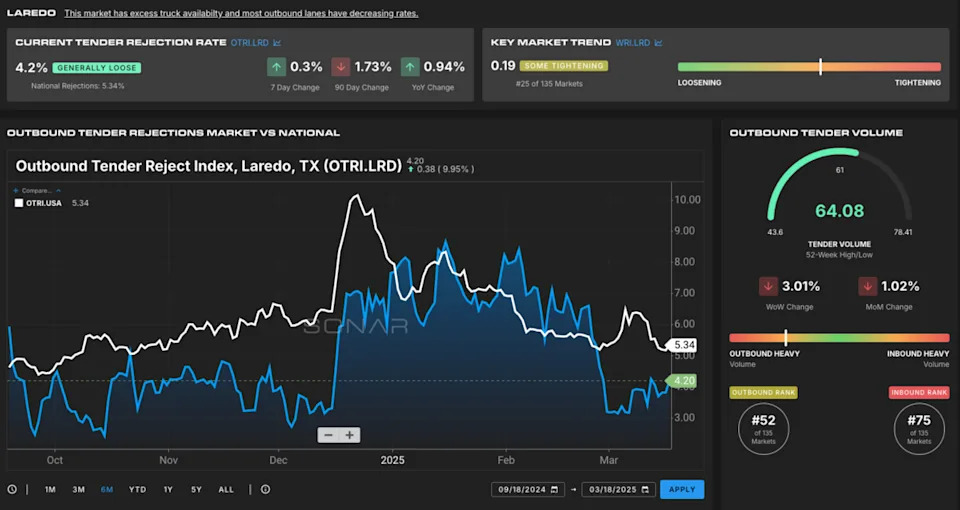
Check Call: DHL looks at the global freight market


DHL has released a study looking at global trade for 2025 and how U.S. trade policy may impact it. The findings in the “ DHL Trade Atlas 2025 ” report offer plenty of uncertainty on global trade and the U.S. as most trade partners wait for possible tariffs of varying percentages to take effect April 2 or be extended again. Amid that uncertainty, the global supply chain show must go on.
The report found that global trade is expected to grow moderately faster over the next five years compared with the previous decade. The growth will be a little slower than expected should the U.S. tariffs kick in and other countries retaliate.
The share of U.S. imports coming directly from China continues to fall, but U.S. reliance on made-in-China goods has not declined substantially. U.S. imports from other countries have more inputs from China, and U.S. direct imports from China may be underreported.
Three main findings in the report:
The United States’ role in global trade, while significant, is not substantial enough to singlehandedly cause a reversal of global trade patterns. Currently, the U.S. accounts for 13% of global goods imports and 9% of global goods exports, the report notes. This means that while U.S. trade policies can certainly create disruptions that impact the rest of the world, their overall effect is unlikely to collapse the global trading system. Even if the U.S. were to significantly reduce its imports, some portion of that trade would be replaced by increased trade among other countries.

Market Check. Laredo, Texas, has grown to become a sizable market as it sees inbound cross-border volumes from Mexico, while also being one of the markets for the beginning of produce season. For right now, though, Laredo has seen little issue with carrier capacity as outbound tender rejections sit at 4.2%. While there is some tightening capacity as outbound tender rejections rise, it’s not enough of an increase to the Outbound Tender Reject Index to impact capacity significantly. Outbound tender volumes have also started falling, dropping 3.01% week over week.


